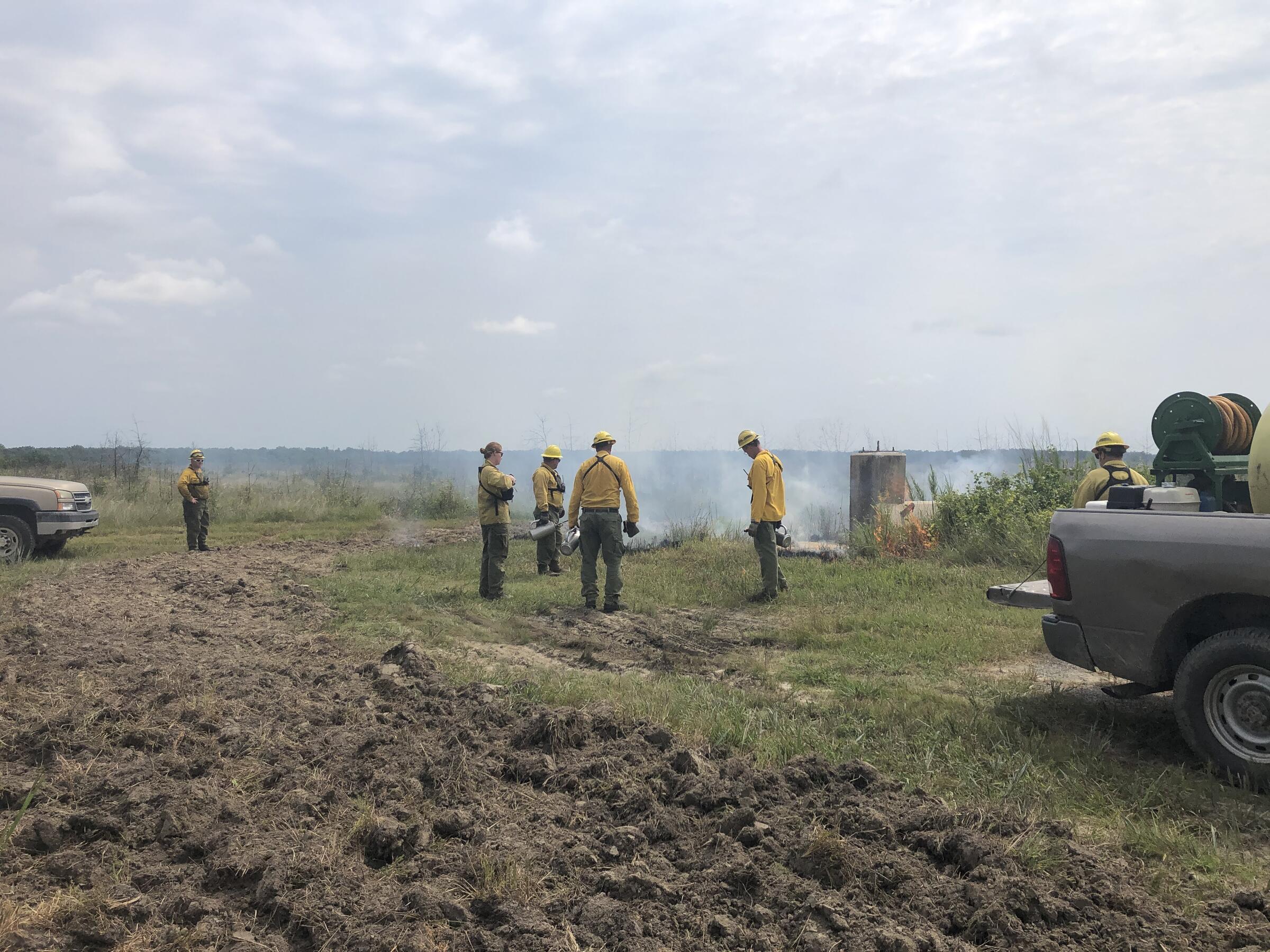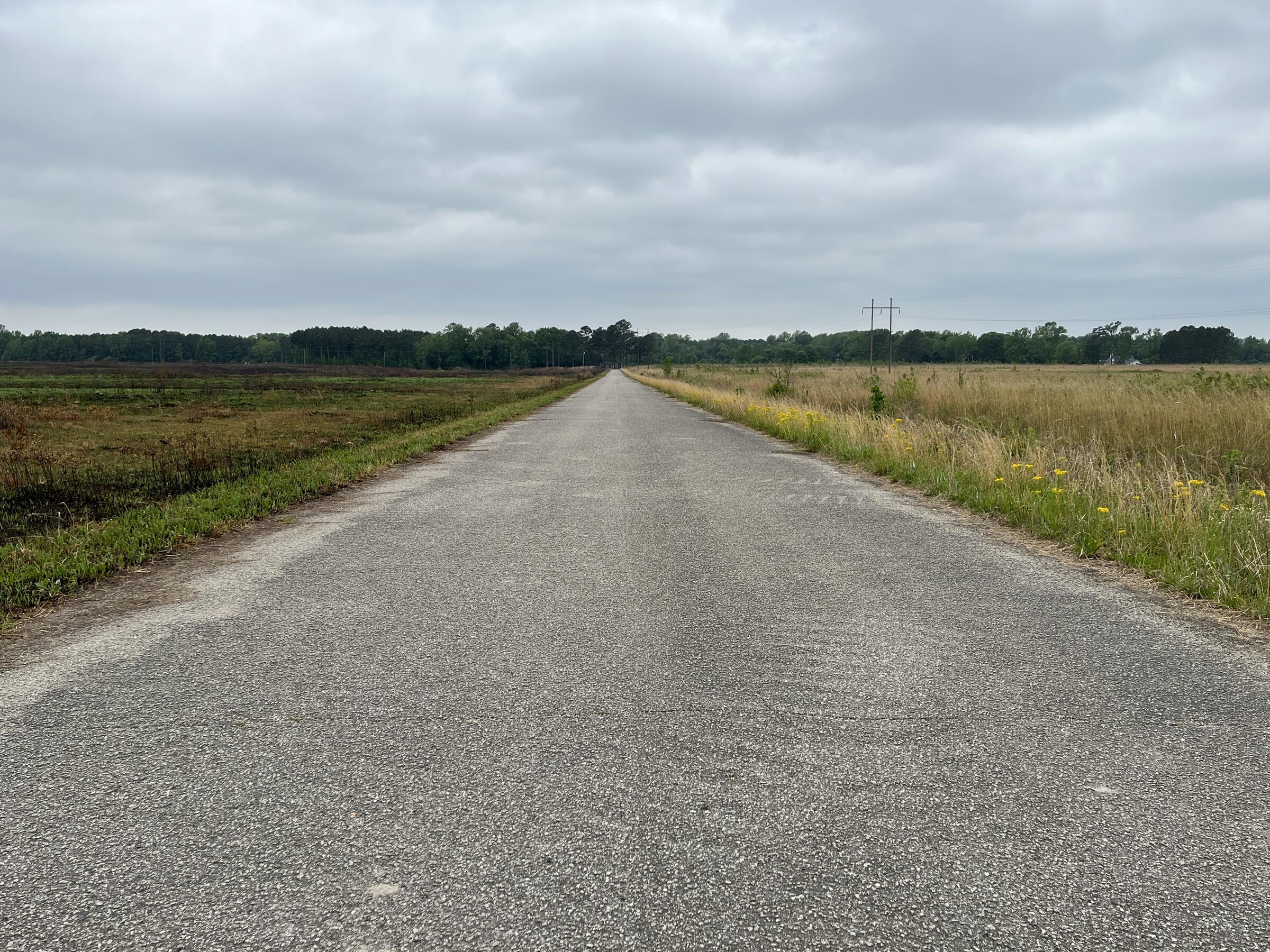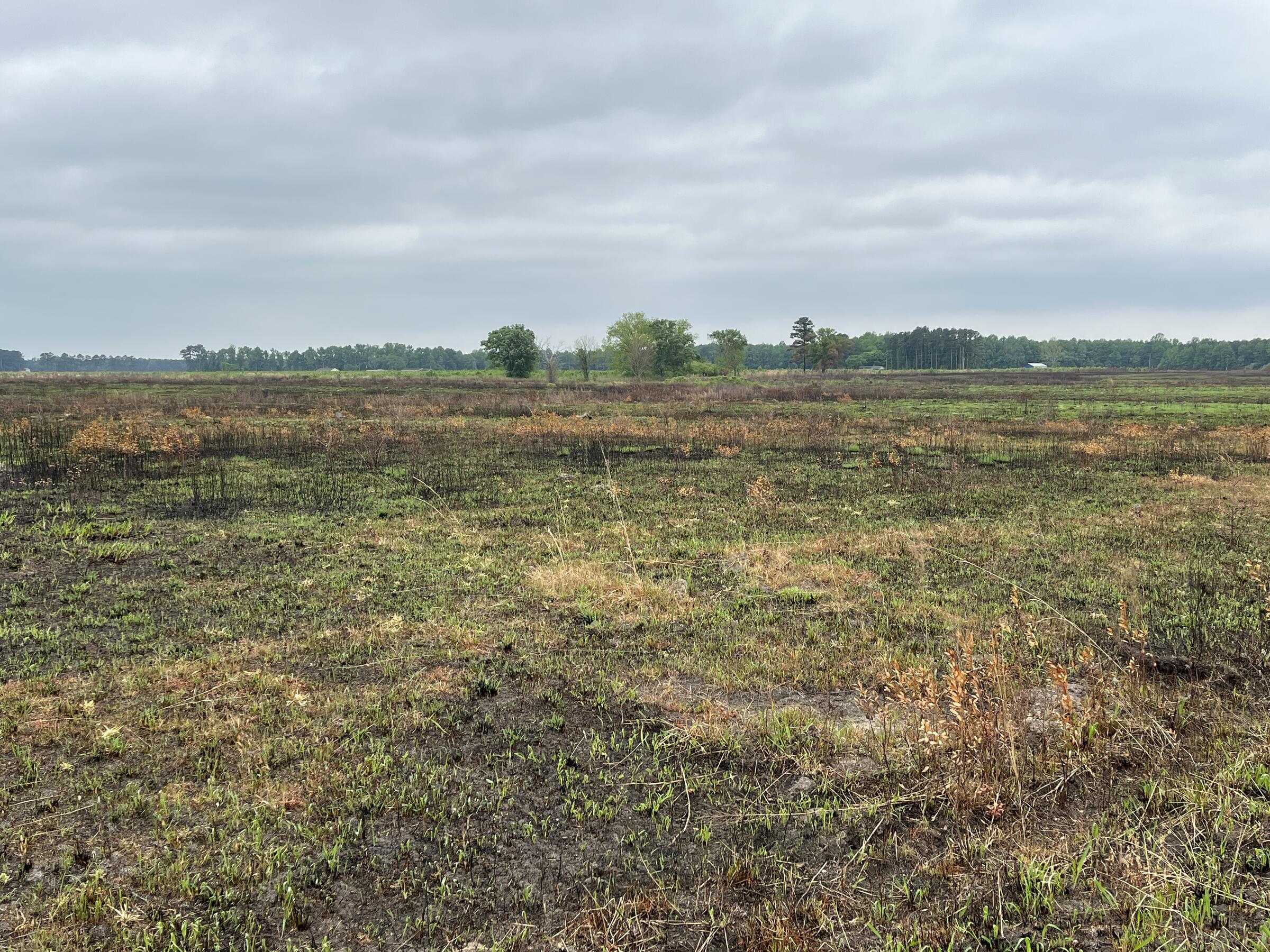Within the secluded forests and farmlands of eastern North Carolina sits a former Voice of America radio broadcasting facility, transformed into a game land by the North Carolina Wildlife Resources Commission. This site is home to the largest known breeding population of Henslow’s Sparrows on the east coast, and is one of only two known breeding populations in North Carolina.
The sparrow remains vulnerable but is increasing thanks to intensive management, and researchers want to keep it that way, but climate change poses a serious threat to how managers maintain the habitat. The good news: there are ways land managers can adapt to a changing climate without negatively impacting the birds.
Their tiny, thin tze-lick call is one of the shortest of any North American songbird, and why NC State PhD candidate Emily Nastase calls them the “Hiccup Sparrow.” Originally widespread throughout its eastern and western range, the species has been in steep decline since the mid-twentieth century.
The eastern subspecies, known as the saltmarsh Henslow, was once found among the tall chord grass of marshes from Massachusetts through North Carolina, while the western subspecies inhabited Midwestern prairies. Based on natural history records, the two subspecies ranges merged as European Settlers moved across the landscape, deforesting large swaths of land and converting saltmarshes and grasslands into agricultural fields. Unfortunately, Henslow’s are rarely found along the Atlantic coast nowadays. The current status of the eastern subspecies is unknown, but many believe it has gone extinct.
The population in eastern North Carolina may be a remnant of the original eastern subspecies, it may be comprised of western birds, or it may be part of a genetically mixed population. Regardless of its origins, to ensure this population’s survival into the future, researchers must first look to the past.
Eastern Subspecies Relic or Western Subspecies Stronghold
The state’s Voice of America Game Land in Washington is home to as many as 1,000 breeding individuals. Nastase studied these birds to understand how Henslow’s Sparrows have adapted over time to survive in the face of chronic habitat loss.
Across the East Coast, reclaimed grasslands, like the Voice of America Game Land, mimic natural grasslands and are maintained by routine fire or mowing. Even in the face of human caused habitat destruction, these sparrows found a way to use man-made landscapes to survive.

While their location suggests an eastern lineage, according to research conducted by Nastase, the birds aren’t genetically different from the birds out west. Nastase has been working with the sparrows to understand more about their ecology, distribution, and population genetics and hopefully help guide management of this bird into the future.
The North Carolina birds’ DNA, however, doesn’t rule out the possibility of this population being a remnant of the eastern subspecies. Nastase looked at their genetic differences, not their physical differences, which could be a point of analysis for future researchers. Saltmarsh Henslow’s were known to have a distinctly larger bill and darker plumage than the western subspecies, so comparing characteristics like this could help us better understand the fate of the saltmarsh Henslow.
The North Carolina Wildlife Resources Commission has been monitoring the Henslow’s Sparrow population since 2011, information which Nastase was able to use in her research when she began collecting data in 2021. Much of her research is focused on why this site has proven to be so important for these birds and how it can be maintained into the future in the face of climate change.
To do this, Nastase assessed their space use, relationship with habitat features, and home range sizes. She also took blood samples to compare their DNA to western samples and looked at how climate change may be impacting management techniques.

Over three field seasons, Nastase caught, measured, banded, and radio tagged almost 70 individual birds. The radio tags transmitted data to a nearby base station set up on the property and allowed Nastase to map their movements throughout the breeding season.
Grassland Specialists
“I was pleasantly surprised to learn just how well these birds are doing here in North Carolina,” said Nastase. “They’re such a rare species and we know very little about their movements in the eastern part of their range, so knowing that there is a stronghold here is very encouraging.”
But one thing is clear: without these managed grasslands, Henslow’s Sparrows wouldn’t survive in North Carolina. Henslow’s are grassland specialists who rely on this specific habitat for breeding, nesting, and foraging. They’re loosely colonial with established breeding territories, meaning that nesting pairs keep relatively close to one another, something that is only possible in open, large grasslands like this one.
Fire is being used by the North Carolina Wildlife Resources Commission to maintain this grassland and is better at recycling nutrients, promoting plant diversity and biomass over time, reducing woody vegetation, and is much faster and cheaper than mowing.
While there are many benefits to burning, there are also a lot of constraints for when and how much to burn. Managers try to burn in late summer, after the Henslow’s breeding season but before hurricanes and rainstorms make controlled fires difficult to do. Climate change is shortening this window, however, as temperatures get hotter, storms become stronger, and favorable fire conditions become scarcer.
That’s why Nastase incorporated fire into her research, to determine how conducting burns earlier in the season might impact Henslow’s population size and breeding success.
She found that even if managers burn earlier during the Henslow’s breeding cycle, it likely won’t have an outsized negative impact on their overall population abundance. So, land managers can adapt when they burn without too much impact on the birds. “Burning is just too important to maintaining the habitat that Henslow’s rely so heavily on that it must be done, even if it means burning a little earlier,” said Nastase.
The Next Frontier
Uncovering the secretive life of the Henslow’s Sparrow on their breeding range was the first frontier. Nastase determined why this managed grassland is so vital for Henslow’s and how the site can be maintained into the future, but there are still questions to be asked by future researchers.
What physical differences, if any, exist between the population in North Carolina and western birds? Where does this population overwinter? How do they get there? What habitats do they rely on in the winter or during migration?
Motus towers could help by tracking where the birds travel. There just aren’t enough stations along the eastern flyway that would pick up these tiny birds' movements. Tagging such a small bird with a radio tag durable enough to withstand dense grass and long flights is also a challenge.
“There is still a lot we don’t know about this amazingly resilient population of Henslow’s Sparrows in North Carolina,” said Nastase. “But by starting to unravel the timing of their movements and behaviors on their breeding range we can better determine the questions that need to be asked to help ensure their survival into the future.”
*All banding, marking, and sampling was conducted under a federally authorized Bird Banding Permit issued by the U.S. Geological Survey’s Bird Banding Lab.








